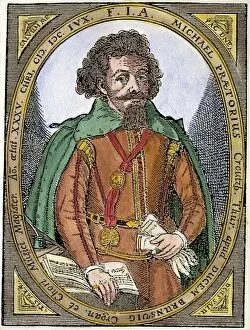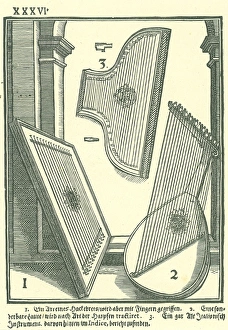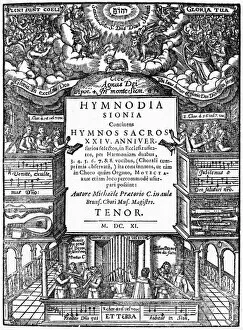Praetorius Collection
Praetorius, Michael (1571-1621), was a renowned German composer and writer on music. His contributions to the world of music are still celebrated today
All Professionally Made to Order for Quick Shipping
Praetorius, Michael (1571-1621), was a renowned German composer and writer on music. His contributions to the world of music are still celebrated today. Praetorius's talent and passion for music were evident from an early age, as depicted in his signature engraving from 1571-1621. One of his notable works is Ludicrum Chiromanticum, published in 1661, which showcased his expertise and creativity in the field of composition. The title page engraving beautifully captures the essence of this masterpiece. Praetorius's influence extended beyond composing; he also had a keen interest in musical instruments. He meticulously studied organ-bellows and blowers at Halberstadt Cathedral, as seen in an intriguing engraving that showcases his dedication to understanding every aspect of music. In addition to being a composer and musician, Praetorius was also known for collaborating with other talented individuals. A frontispiece created by Christian Hoburg depicts Will A. Heelan and Chris Praetorius baking a cake together around 1898. This artwork not only highlights their creative partnership but also showcases their shared love for culinary arts. The artistic talents within the Praetorius family did not stop with Michael alone; Charles William James Praetorius made significant contributions as well. The Desborough Mirror created by him in 1946 exemplifies his skillful artistry. Another fascinating aspect of Praetorius's life is his exploration of different types of drums during the years 1615-20. From military drums to side drums, he delved into various percussion instruments that added depth and rhythm to compositions. Furthermore, it is worth mentioning that Praetorius showed great appreciation for early Italian stringed instruments such as Hackbret and lute-shaped instruments. These unique pieces inspired him creatively while composing enchanting melodies that have stood the test of time.

















